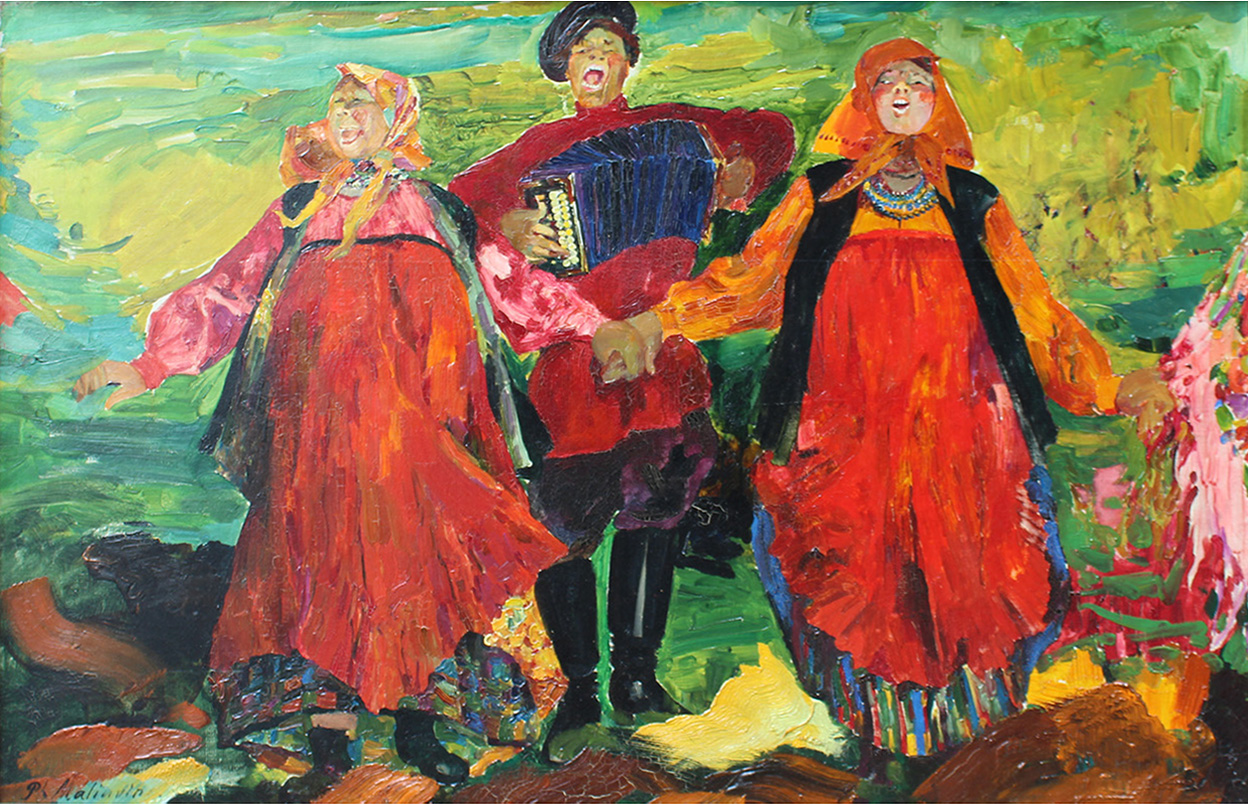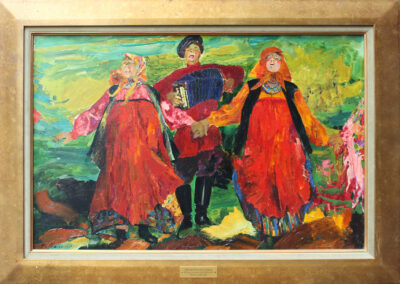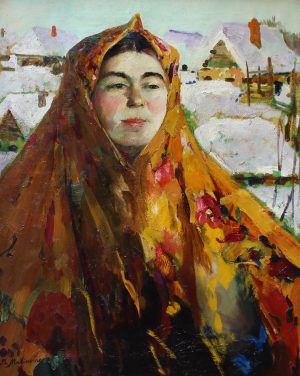Philip Andreevich Maliavin (1869-1940)
Philip Andreevich Maliavin was one of the leading Russian painters of the early 20th century. Born into a large and very poor peasant family in the village of Kazanka, Maliavin developed an early love of art from the exposure to icons brought to the village by travelling monks. He convinced his family to send him to Mount Athos to study icon painting, and with the help of the village, at age 16 he made the journey to Greece. He was disappointed when he arrived to learn that the monks there were actually copying Russian icons, but since he lacked the money to return home, he became a novice assigned to paint icons and murals. Through the generosity of the artist Vladimir Beklemishev, who visited the monastery and recognized the talent of the young artist, Maliavin returned to Russia in 1892 to study at the St. Petersburg Academy of Arts, entering the studio of Ilya Repin. There Maliavin developed his skills as a gifted portrait painter and also began his paintings of Russian peasants, a theme which while initially controversial would become his lasting legacy. Laughter (1899), his bold painting of peasant women in flowing red dresses in a green meadow, created as his graduation work for the Academy of Arts, was actually rejected by the Academy, but subsequently earned Maliavin the Gold Medal at the World Exhibition in Paris (1900). The more conservative Academy awarded Maliavin the title of “Artist” based on the quality of his work in portraiture, while his peasant canvases found favor abroad and were purchased by museums in Paris and Venice.From 1901 through 1910 Maliavin lived in Ryazan province, where he developed his paintings of large-scale peasant figures, who appear as strong-willed and independent individuals. In these compositions, sometimes of single figures, other times showing two or three together, the figures are brought to the foreground and are presented from a low angle to increase their monumentality. These peasants are not always beautiful, but they radiate inner strength and integrity, and they reveal age, character, and mood. Maliavin’s style developed as a fusion of Russian Impressionism and traditional folk themes with abstraction, influenced by French painting and by the Swedish artist Anders Zorn. His works are noted for his expressive brushwork, sweeping movement, and love of strong color, especially reds. However, by 1910 Maliavin was falling out of favor with the official art critics. He was not banned, but was considered “decadent” by the influential critic Vladimir Stasov, for whom the lively, healthy, and colorful peasants of Malyavin did not coincide with the political image of the oppressed people of the countryside. By the 1920’s the Russian hierarchy would only permit the exhibition of paintings deemed to have “educational value,” and the country’s rich holdings of Impressionist, Post-Impressionist, and Fauve works were removed from view. Maliavin immigrated to Paris in 1922, and lived there and in Nice through the 1930s. During World War II he fled to Brussels, where he was arrested by the Gestapo in 1940 and accused of espionage. He was subsequently released and is said to have walked all the way back to Nice, where he died the next year.
Russian Peasants Singing 1899
by Philip Andreevich Maliavin (1869-1940)
| Medium | Oil |
| Medium Detail | Oil on canvas |
| Dimensions | 23 ¾ x 36 1/8 inches |
| Signed Location | Lower left |
| Date Created | 1899 |
Printable version
View additional works by Philip Andreevich Maliavin
1 in stock
Contact Us About This Piece



